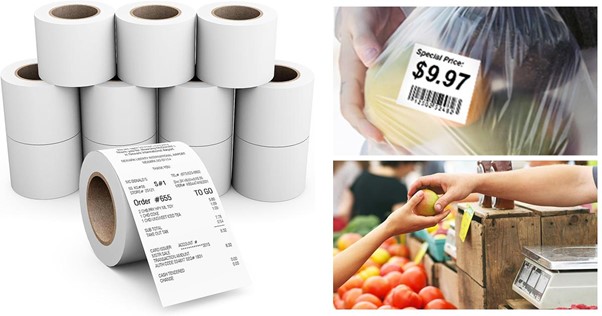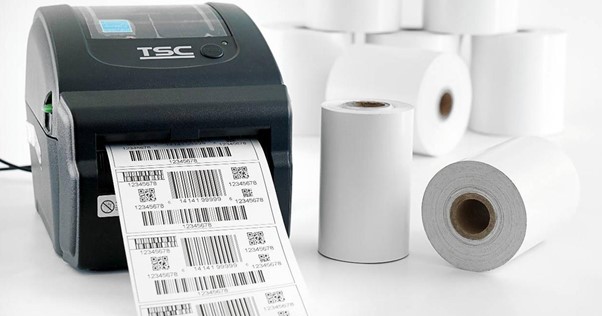
By 2050, we want to have a completely circular, toxic-free, environmentally sustainable, and carbon-neutral economy, regulations further enhance the circular economy to support sustainability. Companies are currently facing pressure to integrate sustainable practices into their operations to encourage the decrease of carbon dioxide emissions. An ecologically friendly way to help achieve this aim is using Linerless Labels.

The market provides a range of labelling alternatives, ranging from conventional labelling that uses pre-cut, liner-backed labels to choices that use liner-free or linerless labelling.
Linerless labels are pressure-sensitive labels made without a liner and coated with silicon to prevent the labels from sticking to one another.
Linerless mediums are becoming the preferred choice for sustainable printing for companies seeking an eco-friendly substitute for traditional labeling.
First and foremost, linerless adhesive labels do away with the need for backing paper, which removes a waste source connected to traditional labels.
Massive materials discarded in labeling procedures are silicone backing paper, sometimes referred to as liner trash. Businesses may show their support for a circular economy and waste reduction by implementing linerless adhesive labels, whether they are permanent or repositionable.

Materials that are completely recyclable, biodegradable, and environmentally benign can get used to create linerless adhesive labels. We may select these materials to have as little of an impact on the environment as possible during their lives. Choosing eco-friendly adhesive labels is a crucial first step in lowering a company's environmental impact as it works to fulfill its sustainability objectives.
Many individuals work in occupations that need them to label things, and there will be occasions when they must print large quantities of Linerless Labels. Although printing might be a considerable expenditure, procurement, and finance departments get aware that switching to linerless labels can result in up to 50% more labels per roll. It might be a significant cost savings with little effect on operations, depending on how many rolls your company processes each month. It also frees up vital space and makes your organization leaner overall because you don't need to keep as many labels.
When using standard labels, the backing paper or liner increases the quantity--of storage needed. The ability to put more labels on a single roll using linerless labels enables organizations to store more labels in the same space, increasing storage efficiency and resulting in cost savings.
Businesses may attract clients who appreciate sustainability and improve their brand image by implementing sustainable packaging solutions like linerless labeling. In addition to bringing in new clients looking for eco-friendly items, this may boost brand loyalty and customer retention.
Make sure to verify with your printer manufacturer or supplier since not all label printers gets made to handle linerless labels. An additional need for linerless labels to adhere is a strong adhesive.
Maintaining and cleaning linerless labels is essential to achieving optimal results and preventing residue accumulation on the printer. It can get minimized by using the proper printer settings. It is necessary to determine the appropriate print speed, darkness, and other criteria for the labels that will get utilized.